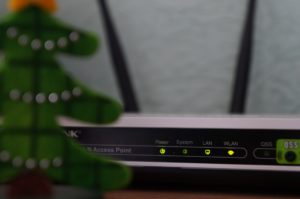The worst combo is definitely a lot of intriguing things to do and a bad internet connection. You’ve rebooted your machine, reset your router, and double-checked your wires, but nothing has changed. Perhaps the issue isn’t with the hardware.
Maybe it’s because the signal isn’t strong enough. We have a solution for you. The main plan begins with a tin foil-covered card-shaped flap that will be placed in front of the router. The aluminum coating will increase the strength of the bond.
Is it possible?
Simply walk to the kitchen and get some foil, which parents frequently use to wrap things. A little paper box is also required. These procedures will significantly improve your signal strength.
In reality, I have no way of knowing whether you will boost your signal more or less. The location of your router, on the other hand, is critical in dispersing the signal across the house. I prefer to hang it on a wall or place it somewhere high.
Explained
Scientists have developed a simple, low-cost way for improving having fast internet inside your home. And it depends on a culinary item that virtually everyone has on hand: aluminum foil.
The team claims that by employing an aluminum foil reflector shield as a ‘virtual wall’ behind your Wi-Fi router. You can influence the flow of indoor wireless signals, potentially providing your home network with better coverage and speeds.
“Through this single approach, we solve a variety of issues that wireless consumers face.” explains Dartmouth College computer scientist Xia Zhou of Hanover, New Hampshire. “We not only enhance wireless communications, but we also make them more secure.”
The researchers sought to see whether there was a way to utilize the same principle to better direct wireless signals from a router, inspired by a DIY hack where individuals use aluminum soft-drink cans to attempt to enhance their Wi-Fi.
While there’s no doubt that utilizing the aluminum from an empty drink can will assist enhance your Wi-Fi, the technique’s drawback is that you wind up with a curved, generic panel as your reflector. Because everyone’s house is different, putting up a can shaped like a radar dish and praying for the best isn’t very scientific; it doesn’t offer you much control over where the wireless signals are directed by the aluminum.
To expand on the concept, Zhou’s team developed WiPrint, a system that analyzes the inside architecture of your house and maps out places where you’d want your Wi-Fi signal to be increased, as well as locations where you don’t require a strong connection.
WiPrint’s algorithm can generate the optimal form for a signal reflector to position next to your Wi-Fi router using those inputs, which can then be 3D-printed in plastic and coated with aluminum foil.
The best part is that creating a functioning reflector model only takes around 23 minutes, and the only expenditures are related to having the frame 3D-printed.
“A wireless reflector may be custom-built to outperform antennas that cost thousands of dollars for a simple expenditure of around US$35 and defining coverage requirements,” adds Zhou.
During testing, the team’s technology was able to enhance wireless signals by up to 55.1 percent in regions that needed it, while lowering them by up to 63.3 percent in areas where they weren’t. “I can’t really suggest people use tinfoil or any type of reflector, mostly for regulatory reasons,” said Eric Siu, senior product development manager at Linksys, who wasn’t involved with the research.
“The FCC regulates output power in the United States, therefore they have limits on the maximum power level your wireless router may broadcast a signal in any given direction.” But don’t worry if you’d rather retain your aluminum foil-wrapped pizza leftovers, there are lots of other methods to improve your home Wi-Fi, and we promise the FCC won’t come knocking on your door.
Conclusion
Of course, many of us aren’t too concerned about our Wi-Fi being weakened, but we should be: allowing your signal to seep outside your house might allow hostile hackers to try to eavesdrop on (or control) your network, but the threats are likely to be modest.
While we don’t have accessibility to the researchers’ method for determining the best shape for Wi-Fi reflectors depending on our home layout, there’s no reason you can’t experiment with your own aluminum covering to see if you can extend the range of your router.
This WiFi signal booster technique to fast internet is well worth a go. A lot of testing and comparing signal strength with and without the foil, and the results are astounding.
Just keep in mind that, depending on where you reside, tampering with wireless signals may be illegal.









